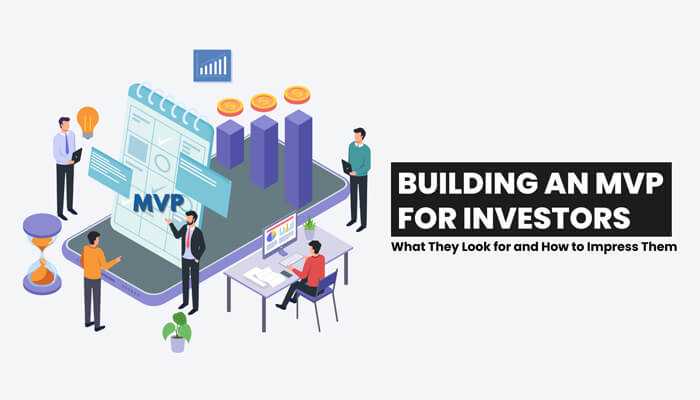Investors don’t just fund products – they fund beliefs. Belief that your idea solves a real problem, that your team can execute, and that the market is hungry enough to scale. Your [minimum viable product] MVP for investors isn’t just a prototype; it’s the physical embodiment of those beliefs. Here’s how to shape it into a story they can’t ignore.
The Investor Mindset: What’s Really Going On in Their Heads
Investors see hundreds of pitches and product discovery decks. To stand out, you need to hack their decision-making patterns:
1. Pattern Recognition
Their brains are wired to spot “the next big thing” by comparing you to past successes. Airbnb wasn’t just a rental platform – it was “eBay for space.” Frame your MVP within familiar narratives but with a twist.
2. Loss Aversion
Fear of missing out (FOMO) drives many deals. Show traction – even small wins – to trigger urgency. Example: “We onboarded 50 paying users in 2 weeks with a waitlist.”
3. Social Proof
Investors herd. If you have advisors from respected companies or early adopters in big-name brands, flaunt it. Humans trust what others validate.
The 4 Pillars Investors Demand in Your MVP
1. Problem Validation: Prove the Pain is Real
Investors need to feel the problem. Your MVP should include:
- User Evidence: Video testimonials, survey data, or metrics like daily active users (DAU).
- A “Before vs. After” Demo: Show life without your product, then with it.
Example: A fintech MVP lets users upload bank statements. The demo highlighted how it automated expense tracking – saving 8 hours/month. Investors saw the pain (manual work) and the gain (time saved).
2. Scalability Hints
Your MVP can’t be polished, but it must hint at scalability.
- Tech Stack: Use cloud services (AWS, Firebase) to signal you’re built to grow.
- Metrics That “Zoom Out”: CAC (customer acquisition cost) under $10, or a 20% MoM growth rate – even if from a small base.
3. Defensible Moats
What stops competitors from copying you? Your MVP should whisper uniqueness:
- Exclusive Data: A travel app MVP with partnerships for real-time hotel pricing.
- Early IP: A provisional patent for a novel algorithm.
4. The Team’s “Unfair Advantage”
Investors bet on jockeys, not horses. Use your MVP to showcase:
- Speed: “We built this in 6 weeks despite full-time jobs.”
- Pivots: Share how you iterated from a failed concept. It proves adaptability.
Psychological Tricks to Make Your MVP Irresistible
1. The “Zeigarnik Effect”
People remember unfinished tasks better. End your demo with a cliffhanger: “We’re seeing 15% week-over-week growth… but we need your help to unlock X.”
2. Anchoring
Set a high valuation anchor early. Mention a term sheet or competitor’s raise, then position your ask as a discount.
3. Mirroring
Use language from their portfolio companies. If an investor loves “product-led growth,” describe your user onboarding flow using those exact words.
What Investors Hate: Common MVP Pitfalls
The “Feature Factory” MVP
Adding too many features screams a lack of focus. One founder demoed a task app with a calendar, chat, and file storage. Investors asked, “What’s the one thing you do better than anyone?”
Ignoring Unit Economics
Even if pre-revenue, model your CAC, LTV, and margins.
No Clear Ask
Investors need to know how their cash accelerates growth. Tie funding to specific milestones: “$200K lets us hire two engineers to build our API, unlocking enterprise deals.”
Case Studies: MVPs That Landed Big Checks
Instagram’s MVP (Originally Burbn)
1. What Worked: Focused solely on photo-sharing after cutting check-ins, plans, and other features.
2. Investor Hook: Demonstrated insane engagement – 25,000 users in one day.
Coinbase’s MVP
1. What Worked: A simple way to buy Bitcoin, launched during the 2012 crypto winter.
2. Investor Hook: Proved demand in a “dead” market, positioning as the anti-Mt. Gox.
Calm’s MVP
1. What Worked: Started as a meditation timer with no app – just a website.
2. Investor Hook: Showed retention metrics 3x higher than industry averages.
How to Present Your MVP: The 10-Minute Drill
1. First 2 Minutes: Frame the problem with a relatable story.
“Meet Sarah. She spends 6 hours a week reconciling invoices…”
2. Next 5 Minutes: Demo the MVP. Highlight one “aha” moment.
“Watch how Sarah uploads a PDF and gets real-time payment alerts.”
3. Last 3 Minutes: Reveal traction and vision.
“We’ve saved 200 users like Sarah 1,200 hours this month. With your support, we’ll own the SMB accounting space.”
The Unspoken Truth: Investors Want to Believe, Not Just See
Your MVP isn’t about proving everything works – it’s about proving you can figure it out. A founder who pivoted an MVP three times based on feedback is more compelling than one with a “perfect” prototype.
Need to craft an investor-ready MVP? IT Consulting can help you strip your MVP to its essence, spotlight traction, and frame your story to trigger “yes.” Sometimes, the right introduction is all it takes to turn belief into a wire transfer.



